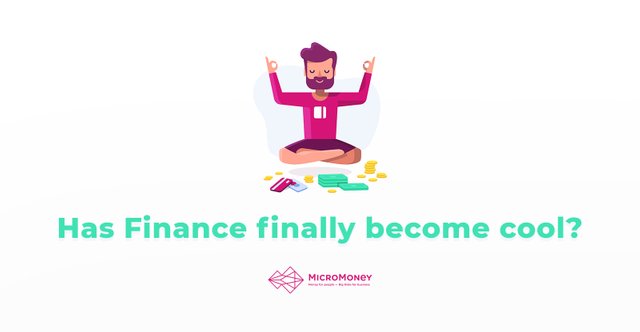Has Finance finally become cool?

Cryptocurrencies Bring Sexy to Finance
The cryptocurrencies are essentially apps. And apps are inherently sexy. Because they smooth and easy to use. They are like you saying “I am being lazy today and I am proud of that. I can do whatever, from the couch, from my smartphone.”
I am sure, you remember the advent of iPhone with all those small thingies there.
This smooth experience is what cryptos is all about. You don’t need to see the tech behind it, you don’t want to weigh different options and read manuals. Today, a lot of Internet users around the globe connect to the Internet via their smartphones. Even if they wanted to, they just don’t have the opportunity to sit in front of the PC and peruse the site with various calculators, descriptions and comparisons.
Cool means fast
Because apps are smooth and easy to deal with, they work fast. You plug in, do the thing you need, done. In 2–3 minutes, you can switch back to listening music and perusing the stuff from the bus/plane/car window.
That’s why, when we were developing our MicroMoney lending system, we worked hard on making sure that the AI inside and the architecture overall would enable us to deliver the highest speed possible. It takes the system no more than 15 seconds to process the loan application and deliver the final decision.
We are convinced that this feature alone would bring a snow-balling word of mouth, because it’s inherently cool, convenient and fun to use.
Cool means cheap
Sexy, beautiful, appealing cryptocurrencies (platforms, apps) are driven by the cultural moods and patterns. These can be different, ergo the world seems to go all glocalization on us at this time.
But cheap is always cool. Notwithstanding the amounts people have at their accounts, getting something cheap can’t be a bad thing. It’s inherently appealing to anybody, irrespective of their cultural, religious, language of economic background.
And cheap comes in different forms.
Sometimes, it’s the direct costs that people need to pay for obtaining certain services or it’s the comparative costs that help select the package that meets the needs in the most optimal way.
But, sometimes, it’s indirect. A great example is the huge swaths of unbanked people across developing and emerging markets. To hook up with a local bank brunch, there are loops to jump through — takes time to visit, maybe need to provide some record, maybe need to pay some origination fees. Eventually, both monetary and “in-the-head” costs add up making this absolutely unattainable.
So, it’s our firm believe that to be truly cool, cryptos need both to cut direct costs that their users need to incur, while also lowering the access barrier by leveraging mobile-focused business models, getting rid of onerous verification systems and any kind of first-time fees.
Cool means decentralized
When the Internet came to be, people were looking at digitization as the ultimate embodiment of sexyness. These days, it’s not about going digital anymore. It’s about giving the power back to people.
For instance, borrowers can get some financial rewards for allowing lenders to share the personalised statistical data they generate with other businesses. Patients can get money for taking part in scientific researches by adding supplements to their diets. Or social network users can get some rewards from the social network, if their page is uber-popular and gets a lot of screen-time for the ads plunked on it.
It can be scary, though, for all of us. Perhaps, because we have been conditioned to try and emulate the very journeys that “Zukerbergs” and “Buffetts” have been taking before us. Now, with the decentralization, social networks, medical institutions and lenders will need to share their revenues with ordinary users, thus axing the salaries of “fat cats” at the top.
But, notwithstand the scariness of it all, we need to start asking the questions as to how much is enough. Is it OK that the top management in a company like Russian Pepsi branch make $20K a month, while factory workers barely jump up to $1K? Is it OK that the medical producers in US can buy their competitors for a pill and pump its price from $40 up to $40,000 in a couple of years, because they are a monopoly for that pill? Is it OK that there is a lot of people in Cambodia, Myanmar, Vietnam, Thailand, Malaysia and Micronesia that would immensely win from cheap and easy-to-get lending, but no bank wants to “soil their hand” in dealing with undeserving clientele?
It’s not. At least, this is what we believe in.
Thus, by asking these questions and finding the right answers, the decentralization-powered businesses will bring a creative-destruction wave that will cut costs, saturate the markets with the services they need and, eventually, improve the well-being on this planet.
To the question in your title, my Magic 8-Ball says:
Hi! I'm a bot, and this answer was posted automatically. Check this post out for more information.